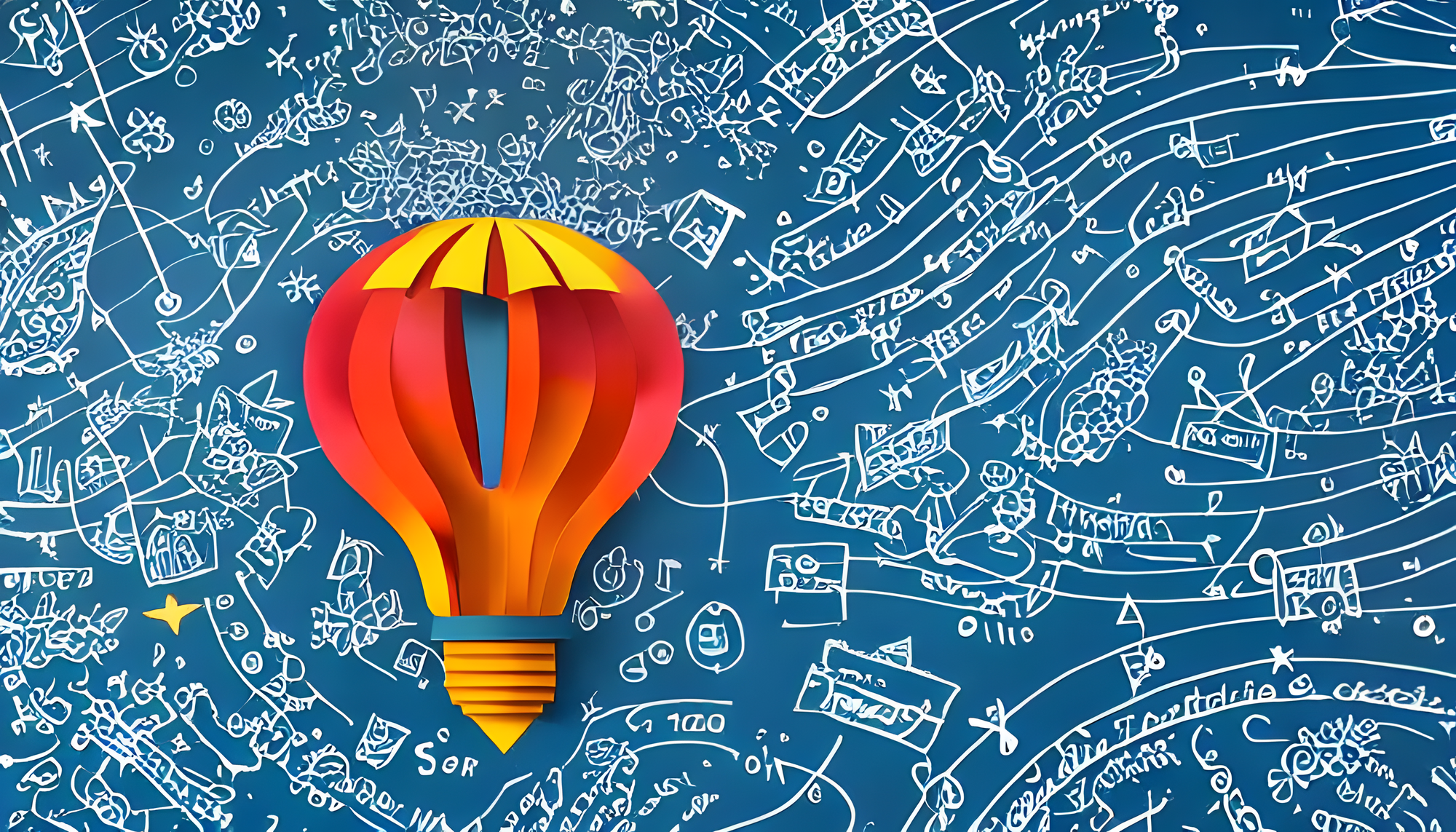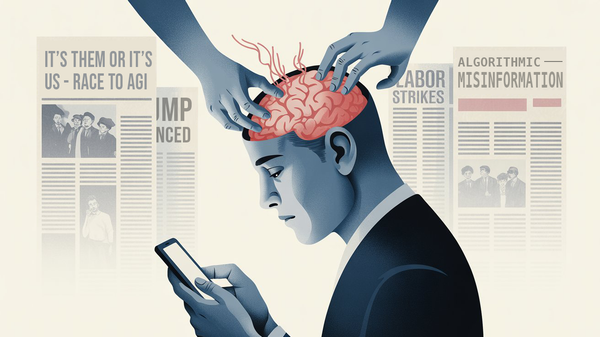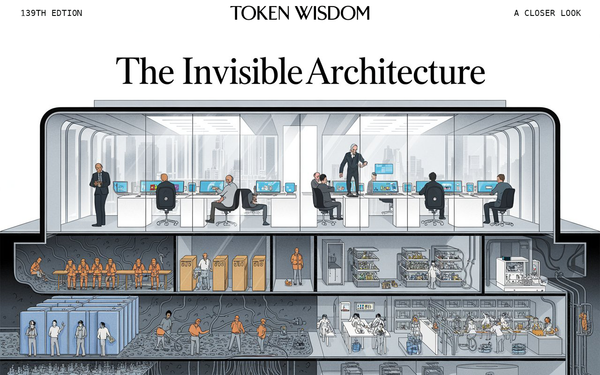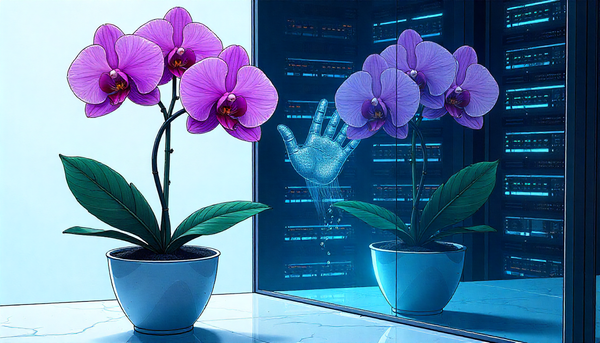The Impact of Artificial Intelligence 🔮
In the wake of a digital dawn, the chalk-and-blackboard era of our past is ebbing away replaced instead with ones and zeros. An evolution is occurring, underpinned by the surge of Artificial Intelligence (AI), poised to re-engineer the brick-and-mortar architecture of education. But disappearing is not just the antiquated teaching methods, but the persisting idea of “one-size-fits-all” education that has bottlenecked students’ potential for years. It’s time to flip the traditional classrooms into open repositories of individual potential powered by AI.
Education, the invisible cornerstone of societal progress, is witnessing something of an awakening. The morning bells aren’t just ringing at the start of a school day but signaling a revolution in the education sector. This revolution is an all-encompassing digital transformation, fueled by AI, that’s set to redefine how we teach, learn, and progress our world-leading minds. Mundane Yankee Doodle ditties of rote learning are giving way to symphonies of vibrant, dynamic AI-driven instruction, meshing textbook knowledge with real-world skills.
AI isn’t rising merely to augment parchment pages with digital solutions; it has set the stage to upheave the educational ecosystem altogether. Imagine a world veering away from the pervasive, inadequate one-size-fits-all approach that has characterized traditional education. Automated classrooms of the future, infused with AI, mold their teaching to dovetail intricately with students’ unique capabilities, weaving patterns of individual strengths into vibrant learning tapestries.
As we examine the heart of this avant-garde approach, we will explore how AI is meticulously sculpting tailor-made learning experiences, giving each student an edge over their own learning. Let’s check our mirrors, adjust our seats, and strap in for this exciting ride as we put the pedal to the metal from the current one-track lanes of strict school systems into freeways of nuanced, digitally enhanced education that unites AI acumen with human creativity.
Welcome to the dawn of a revolution where the silicon of technology meets the chalk of tradition, crafting a new era of interconnected, educated societies.
This fusion holds the promise of an emerging educational experience that binds the wisdom of our past with the prospects of our digital future. From flashcards and textbooks to algorithmically designed individual lesson plans, the new era of education is here — and it’s time to plug in. Let’s dissect this revolution, layer by layer, exploring how the inviting glow of our screens is lighting the path to an enlightened future.
The Power of Personalized Learning
AI can customize learning to an individual student’s needs, making it a powerful asset to enhance student learning. By analyzing student data, AI can provide tailored feedback and recommendations based on individual strengths and weaknesses. Students can take control of their learning by choosing their own speed and concentrating on areas where extra study is needed. AI-powered learning platforms can also help teachers identify struggling students and provide them with additional support.

Besides that, AI brings the element of adaptability to the learning process. Congruent to an individual’s unique learning journey, intelligent algorithms understand the patterns of a student’s progress. This includes but is not limited to, successful learning styles for varied concepts, speed of comprehension, and recurring weaknesses. Thus, AI in education doesn’t rest at just pinpointing a student’s strengths and weaknesses but offers ways of making learning constructive and seamless, thereby enabling genuinely personalized education.
Real-World Examples of AI Revolutionizing Education
An edifying example of personalized learning can be seen in the increasing usage of AI tutoring applications. These apps, such as Thinkster Math and Carnegie Learning, embody spurring growth in the realm of tailor-made curriculums. Rooted in the ideology of moving away from the tediousness of generic learning, these platforms focus on identifying gaps in every student’s understanding and filling those at a pace that suits the individual.

This potent capability of AI plays a critical role beyond creating nuanced educational experiences, extending its benefits to administrative tasks as well. Here’s where AI, through thoughtful implementation, shows promise in lightening the often undiscussed burdens on educators. Google's Project Tailwind is another example of deep minds solving problems and has now developed into the new educational platform of the future, Google AI's NotebookLM.

For a much broader perspective, let’s shine the light on how nations are incorporating AI into Education.
- Singapore: Under its “Smart Nation” strategy, Singapore aims to be a world leader in AI by 2030. An AI-enabled companion will provide customized feedback and motivation to students, automated grading, and machine learning systems to identify how each student responds to classroom materials and activities. A national initiative to build AI literacy among students and teachers is also being implemented.
- South Korea: The country has implemented AI-based systems to adapt homework and assignments based on students’ educational levels and learning behaviors. By 2025, South Korea aims to have AI coursework in its national curriculum across all grade levels, starting with high school. It’s also investing heavily in teacher development around AI.
- India: Ed-tech company Embibe uses AI to clarify complex math and science concepts. Students can use a smartphone to scan a passage from a textbook, and the app uses 3-D imagery to help with visualization. AI is also being used to predict student performance, enabling early intervention.
- Finland: The country has made a national commitment to educate its citizens with free online coursework. Roughly half of schools use the ViLLE platform to give students and teachers immediate feedback and analytics on student assignments. Finland’s AI in Learning aims to promote equity and quality of learning locally and globally.
- China: The government has invested heavily in AI tools, such as the adaptive tutoring platform Squirrel AI. However, ethics, equitable access, privacy, and other concerns are not high priorities in China.
- Japan: The country recently released guidelines for AI in education and has selected a number of schools to pilot them as the government weighs which regulations make the most sense.
- United States: The country is exploring the potential of generative artificial intelligence in education, but guidelines and regulations are coming late compared to other countries. The Department of Education recently released a policy paper on AI, and there are calls for a comprehensive AI training program for teachers.
Automating Administrative Tasks
AI can automate tedious administrative tasks like grading, record-keeping, and scheduling, giving teachers more valuable time to dedicate to teaching and mentorship. Additionally, AI chatbots can offer students 24/7 support, providing answers and enriching their learning journey.

Undoubtedly, the automation of administrative tasks through AI applications in education provides a streamlined experience for both educators and students alike. Reducing time-consuming tasks like grading and record-keeping not only allows teachers to veer their focus back to the core of their profession — teaching, mentoring, and impacting young minds but also optimizes the structure of education management systems. Gaining additional time to devote towards innovative lesson planning or providing personalized mentorship unveils enrichment opportunities in a student’s educational journey. Meanwhile, AI-powered chatbots taking the helm of 24/7 student support allows consistent access to aid and guidance, strengthening the link between learning and understanding.

Moving from this reimagining of roles and responsibilities, there’s still one critical aspect to consider. Beyond administrative tasks and student support, the sight for AI’s impact on education is set ambitiously higher. As the line between the classroom and digital space blurs, there’s an emerging model of education that marries the human touch with a deep understanding of a human-centered approach to the experiences and design practices with the precision of AI at its forefront. As we steered into the dynamic nature of AI-powered learning, it’s time now to comprehend how AI could harmonize with educators rather than substitute them, thus creating a hybrid model of education.
Creating a Hybrid Model of Education
The integration of AI into education does not mean that teachers will become obsolete. Instead, AI will complement and enhance their teaching skills. Automation of administrative tasks frees up teachers’ time, enabling them to focus on developing their students’ critical thinking, creativity, problem-solving, and communication skills. This additional time can also be used to provide mentorship and personalized support to each student’s growth.
The hybrid model of education that combines technology and human interaction is another significant advantage of AI in education. It will provide students with personalized learning experiences that cater to their unique needs, abilities, and interests while also providing them with access to human support from their teachers.
This innovative hybrid model illuminates the roles of both AI-based learning tools and educators, serving certainly not as opponents but rather as allies in education. As AI removes the burden of administrative task management, teachers not only regain time but they reclaim their pivotal role: to be mentors guiding students beyond academics, nurturing their capacity to think critically, create with originality, and communicate effectively. The presence of AI enables a unique intertwining where students, supported by technology, still bask in the essential human support from their teachers. Moving forward, by adopting this coexisting setup, we embark on a journey that not only places academic advancement at its core but also espouses an environment of all-round development. Recognizing this fluidity lets us explore further how AI surmounts perhaps the most significant challenge of education: guaranteeing accessibility for all.
Breaking Down Barriers to Education
AI-enhanced education is helping to make learning more accessible to students who lack access due to location or financial constraints. Language learning apps, for example, can provide quality instruction regardless of one’s background, breaking down barriers to education and creating equal opportunities for all.

Like never before, AI, breaking down age-old barriers, stands to turn education into a democratized field. Unbound by socio-economic circumstances and geographic locations, students now have gateways to premium language instruction, enshrining their unfettered right to quality education. However, as we usher in this era of remarkable accessibility through AI, it is natural that some reservations surface questioning the potential replacements for the touch of human interaction in education. Do these powerful, precise AI-learning platforms inadvertently compromise the softer aspects of learning such as the social and emotional development of students? With judicious design and use, the answer leans towards a more synergized horizon, where AI not only amplifies academic prowess but also nourishes the social and emotional fabric of the learners. Let’s delve into this crucial debate that underscores the viability of AI adoption in educational settings.

Social and Emotional Development
Some people worry that AI in education may decrease human interaction, hindering students’ social and emotional development. However, AI can actually enhance human interaction. AI-based learning platforms offer personalized feedback and support; allowing students to collaborate with their teachers and peers. This creates an interactive learning environment that promotes social and emotional growth.
AI presents a revolutionary new opportunity for education, through personalizing learning experiences, automating tedious tasks, promoting a hybrid learning model, removing barriers to education, and promoting social-emotional development. Any potential concerns about AI can be resolved by combining it with human-based interaction and collaboration.
Contradictorily, research studies evidence that the implementation of AI can offer opportunities to enhance social skills. For instance, a study by Stanford University researchers demonstrated that teaching assistants powered by AI encouraged increased student interaction.

Embracing the AI-Infused Future of Education
As we stride into the future, AI undeniably holds a reigning status, poised to dramatically reshape the educational landscape. The promise of personalized learning experiences, significant administrative efficiency, a seamless bilingual model of instruction, amplified accessibility to quality education, and potential for fostering social and emotional growth underscores AI’s immense potential in nurturing increasingly enlightened societies.
Undoubtedly, the worldview echoes a sentiment of caution. Critics argue that a future over-reliant on technology, specifically AI, may compromise on the emotive and social nuances of traditional education, potentially eroding human interaction. But as we evaluate the dawn of this intelligently automated era, we discover that it’s not a question of superseding human touch but of smartly meshing technology and human elements seamlessly.

The concern according to a 2020 UNESCO report, lies in molding a scenario where AI supplements the teachers’ presence rather than overhauling it completely. When used discriminately, AI’s benefits — time-savings, enhanced engagement, and remedying accessibility issues — are enormous. The 2020 UNESCO report on the future of education argues that AI can play a transformative role in the classroom, but that it should not be used to replace teachers. Instead, AI should be used to supplement teachers’ presence and help them to be more effective.
The report identifies several ways in which AI can be used to support teachers. For example, AI can be used to:
- Provide personalized learning experiences to students based on their individual needs.
- Give teachers real-time feedback on their teaching practice.
- Automate administrative tasks, freeing up teachers to spend more time with students.
Conversely, teachers lay the foundation of students’ all-round development by stimulating their innate curiosity and nourishing a deeper understanding of emotional intelligence.

In May, a UNESCO global survey of over 450 schools and universities found that fewer than 10% have developed institutional policies and/or formal guidance concerning the use of generative AI applications.
The comprehensive utilization of AI, when teamed with the humanistic grace of empathetic and skilled educators, delivers powerful results. AI frees up time, enhances the engagement of learning experiences and bridges accessibility gaps while teachers fan the students’ innate curiosity, fostering their problem-solving capabilities, and nurturing a deeper understanding of community and emotional intelligence.
AI should be utilized to augment the educational experience for students, incorporating support tailored to individual learning styles, needs, and goals. It can help nurture students’ cognitive, emotional, and social development, ushering in an era of human-tech collaboration. AI is now far more than a disruptive force; it is a versatile and accessible instrument to support the advancement of education.
As we visualize such a future, the essential course of action amid this exciting, albeit challenging, educational revolution is not to resist but to adapt. As a society, it is incumbent upon us to advocate for equal access to this revolution, to ensure it’s implemented judiciously, and that teachers are nimbly equipped to harness the power of AI. After all, our ultimate goal remains unchanged — to foster an environment that provides every student the breadth and depth of education they deserve. Unleashing the true potential of AI in education requires us to embrace this vision.

⚉ Thanks for cruising by the Cult of Innovation ⚉
We’re making some Stone Soup here and if you enjoyed this amuse-bouche of innovative compilation of breakthroughs in bite-sized morsels, please share with your friends and help feed a community. Mmmm. #nomnom.
You can find me elsewhere on the innanets:
- I’m repping ✨ Token Wisdom on LinkedIn
- I’m @worthafortune on Twitter 🧐
- And all the rest is on my Bento







Member discussion